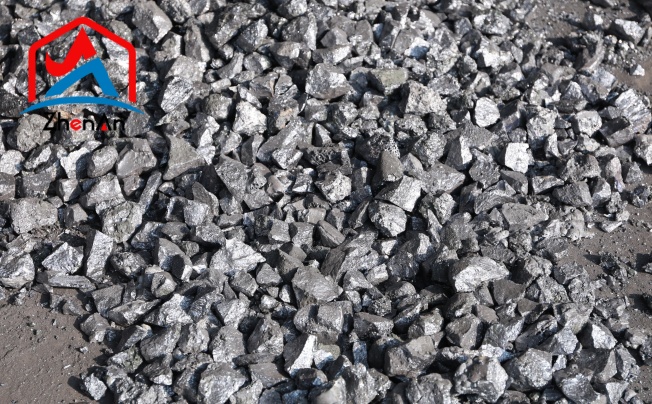Physical and Chemical Properties of Iron
Iron is a lustrous, silvery-grey metal with atomic number 26 on the periodic table. It is one of the most abundant elements on Earth and is known for its exceptional strength and durability.
At room temperature, iron exists in a solid state with a characteristic crystalline structure known as body-centered cubic (BCC). Its atomic radius and atomic weight are 0.126 nm and 55.845 u respectively.
Iron has a melting point of 1,538 degrees Celsius and a boiling point of 2,861 degrees Celsius. Iron also exhibits unique chemical properties that make it indispensable in various industries.
It readily reacts with oxygen in the presence of moisture to form iron oxide (rust), which can weaken its structural integrity if not properly protected. However, this reactivity also makes iron an ideal candidate for alloying with other elements to enhance its mechanical properties.
Common alloys include steel (iron-carbon), cast iron (iron-carbon-silicon), and wrought iron (iron-silicate). The versatility of iron alloys enables their use in construction, machinery manufacturing, transportation infrastructure, and countless other applications.
Specific Gravity of Pure Iron
Specific gravity, also known as relative density, is a fundamental physical property that quantifies the ratio of the density of a substance to that of a reference material (usually water for solids and liquids). In simpler terms, it indicates how much denser or lighter a material is in comparison to water.
The specific gravity of pure iron is a crucial metric in materials science and engineering as it aids in identifying and characterizing different materials based on their density. The specific gravity (SG) of pure iron is calculated by dividing its density by the density of water at 4 degrees Celsius, which is considered to be 1 gram per cubic centimeter.
Therefore, the formula for specific gravity can be expressed as SG = ρiron / ρwater.
Determining the specific gravity of pure iron involves employing various experimental methods that are meticulously designed to provide accurate results. One common approach is using Archimedes' principle through buoyancy measurements. A sample of pure iron is weighed first in air and then when fully submerged in water. By measuring the difference in weight between these two conditions and considering the density of water, one can calculate the specific gravity with precision.
Another method utilized for determining the specific gravity involves using specialized equipment like pycnometers or gas comparison pycnometers. These instruments allow for precise measurements by comparing the volume occupied by pure iron with that occupied by a known reference substance under controlled conditions. Through meticulous experimentation and data analysis, researchers and scientists can ascertain the exact specific gravity value of pure iron, contributing valuable insights into its properties and applications within various industries.
Applications in Industry
The Significance of Specific Gravity in Metallurgy
Specific gravity serves as a fundamental property that aids in the identification and classification of different materials within the field of metallurgy. By knowing the specific gravity of iron, metallurgists can determine its purity level, composition, and even potential applications.
This data is crucial for designing alloys with desired characteristics such as strength, ductility, or corrosion resistance. Furthermore, specific gravity data is used to calculate density and volume measurements essential for various metallurgical processes like casting, forging, and heat treatment.
The Role of Specific Gravity in Manufacturing Processes
The manufacturing industry heavily relies on precise measurements and properties like specific gravity to ensure product quality and consistency. In manufacturing processes involving iron, such as steel production or component fabrication, knowing the specific gravity of pure iron is indispensable. Engineers use this information to select suitable raw materials based on their density and compatibility with other elements in the manufacturing process.
Additionally, specific gravity data aids in controlling the composition of metal alloys during production to achieve desired mechanical properties and performance standards. Without accurate knowledge of specific gravity values, manufacturers risk compromising product integrity and overall operational efficiency.
Enhancing Quality Control Through Specific Gravity Analysis
Quality control is a cornerstone of successful industrial operations across various sectors. By incorporating specific gravity analysis into quality control protocols within metallurgical and manufacturing settings, companies can ensure consistent material properties and adherence to regulatory standards.
Monitoring variations in specific gravity values allows for early detection of material impurities or deviations from specified compositions that could jeopardize product quality. Through meticulous testing and analysis procedures focused on specific gravity measurements, industries can optimize their processes for cost-effectiveness while maintaining high standards for product performance and reliability.
Unexpected Applications of Specific Gravity
The Role of Specific Gravity in Shipbuilding
Specific gravity plays a crucial role in shipbuilding, where understanding the buoyancy and stability of a vessel is vital for its safety and performance at sea. Ship designers and naval architects carefully calculate the specific gravity of various materials used in constructing ships to ensure they achieve the desired weight distribution and balance.
By knowing the specific gravity of different components such as steel, aluminum, and fuel, engineers can determine how deep a vessel will sit in the water and how it will behave under different conditions. This knowledge is essential for designing ships that can stay afloat and navigate effectively.
The Curious Case of Archaeology
In the field of archaeology, specific gravity serves as a valuable tool for identifying ancient artifacts and determining their authenticity. By measuring the specific gravity of materials like pottery fragments or metal objects found at excavation sites, researchers can gain insights into their composition and origins.
Golf Club Design
Golf club manufacturers utilize specific gravity measurements to optimize the design and performance of their clubs for players seeking precision and distance on the course. By strategically distributing weight within club heads based on specific gravity calculations, engineers can enhance factors like forgiveness on off-center hits or adjust launch angles for maximum distance.
Understanding how different materials with varying specific gravities affect swing dynamics allows designers to create clubs tailored to golfers' individual preferences and playing styles.






